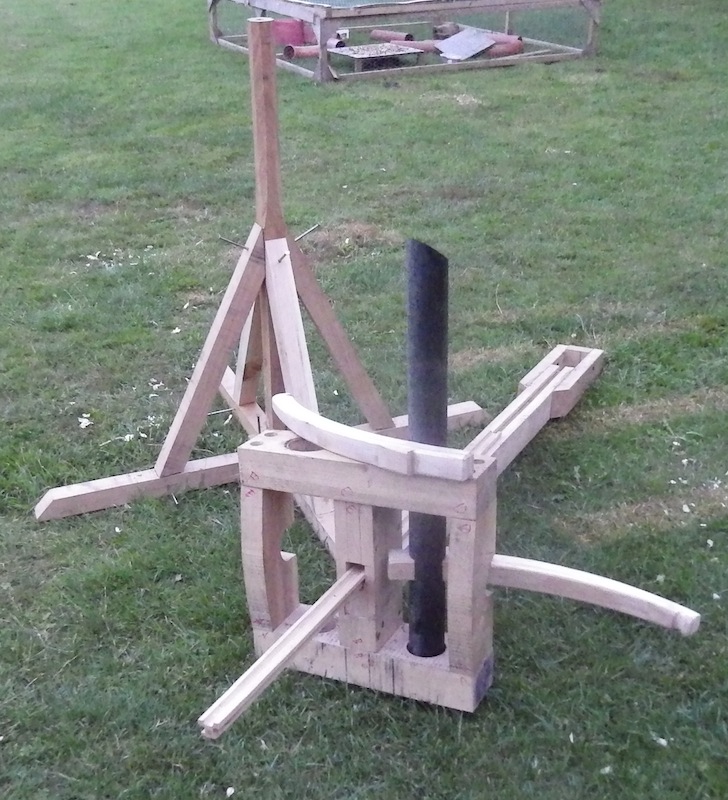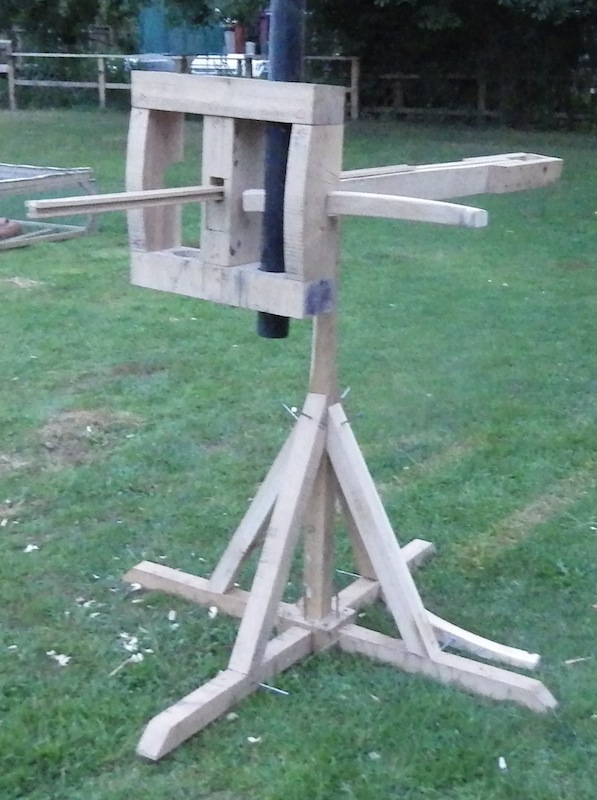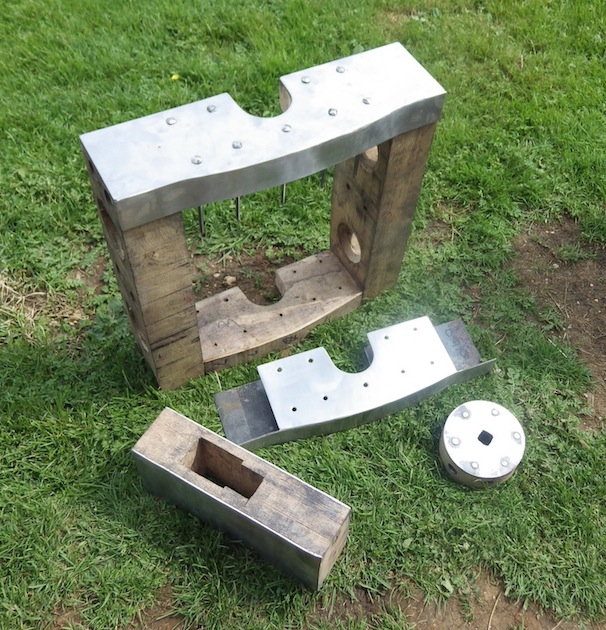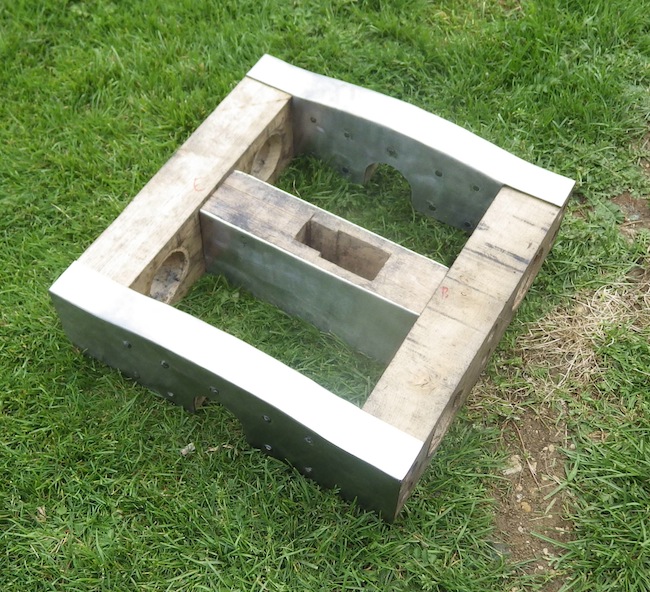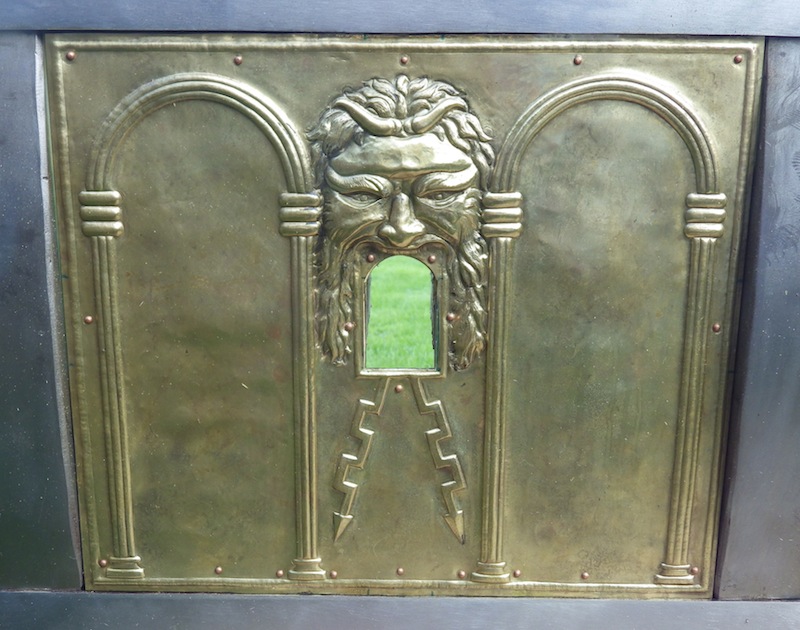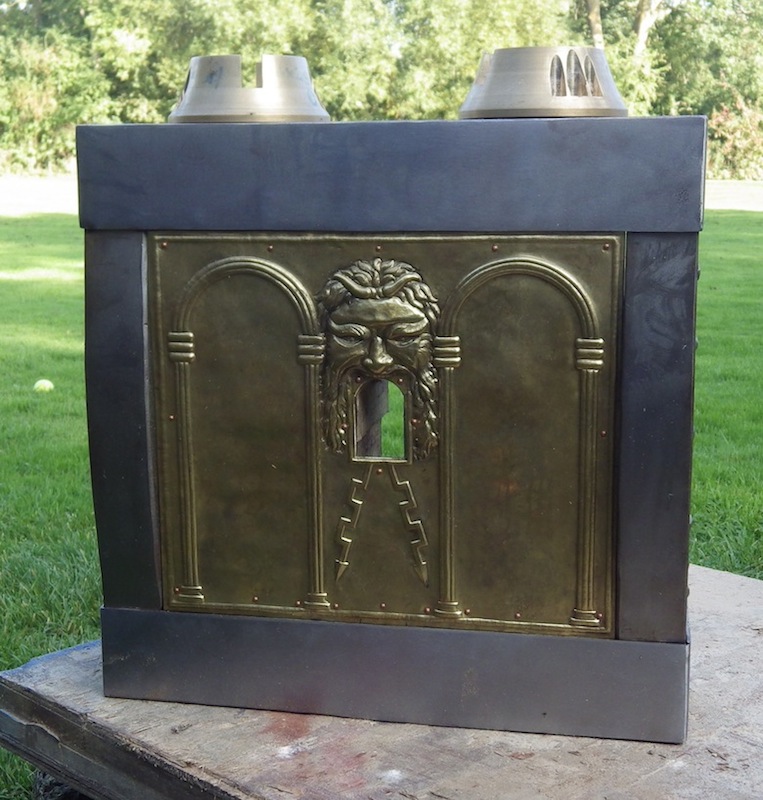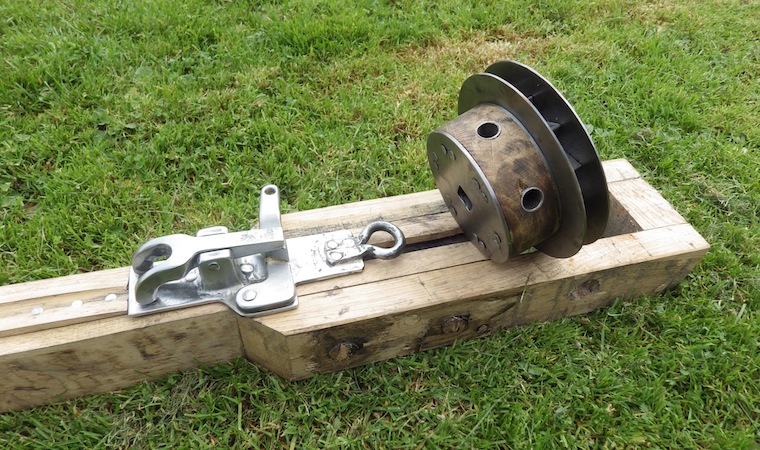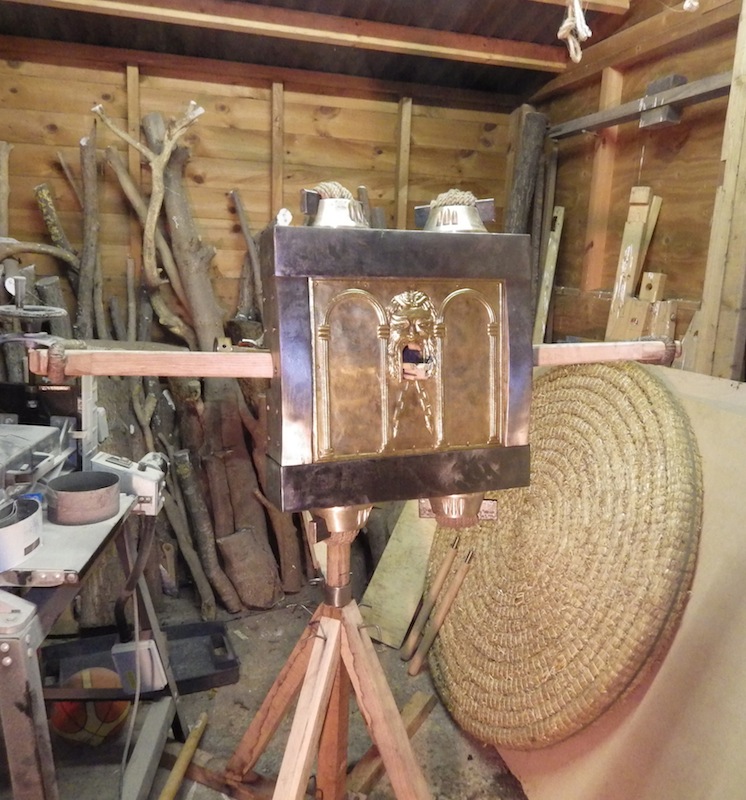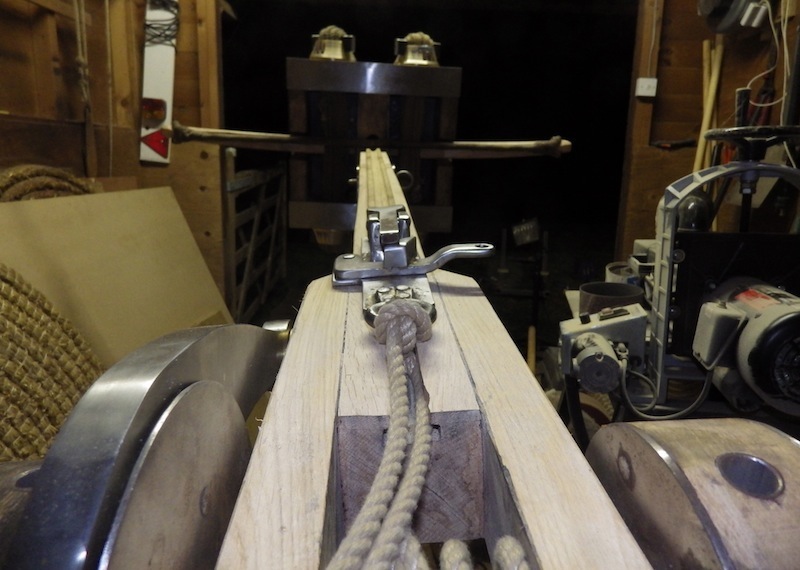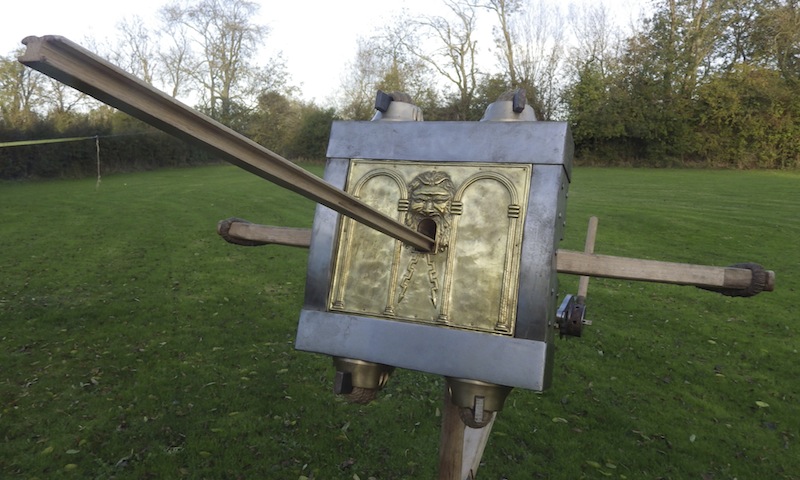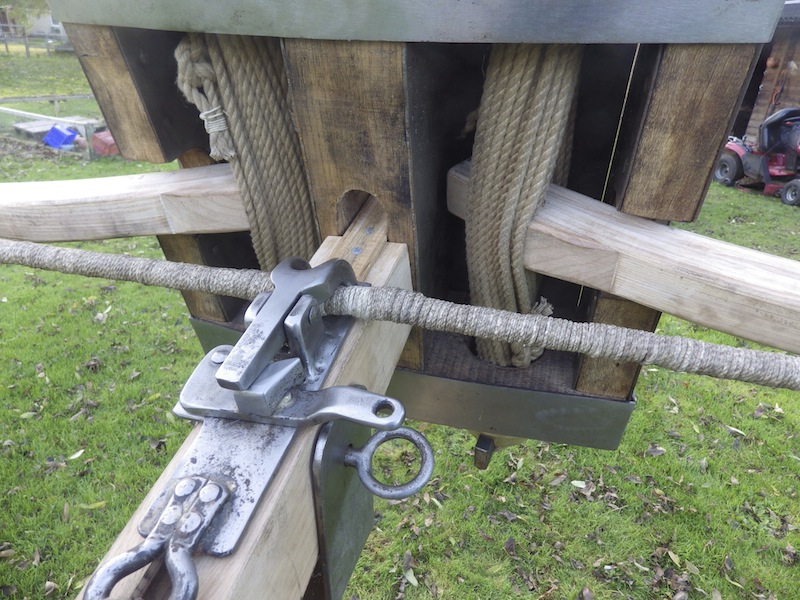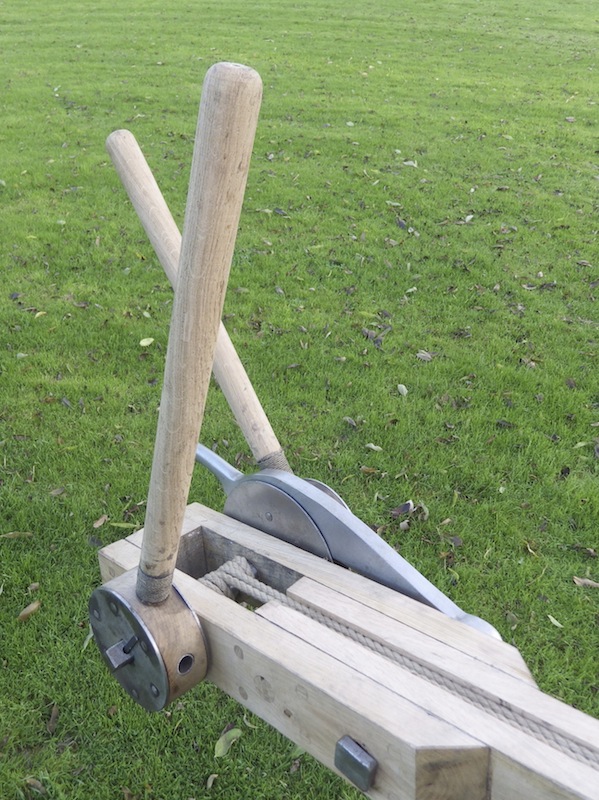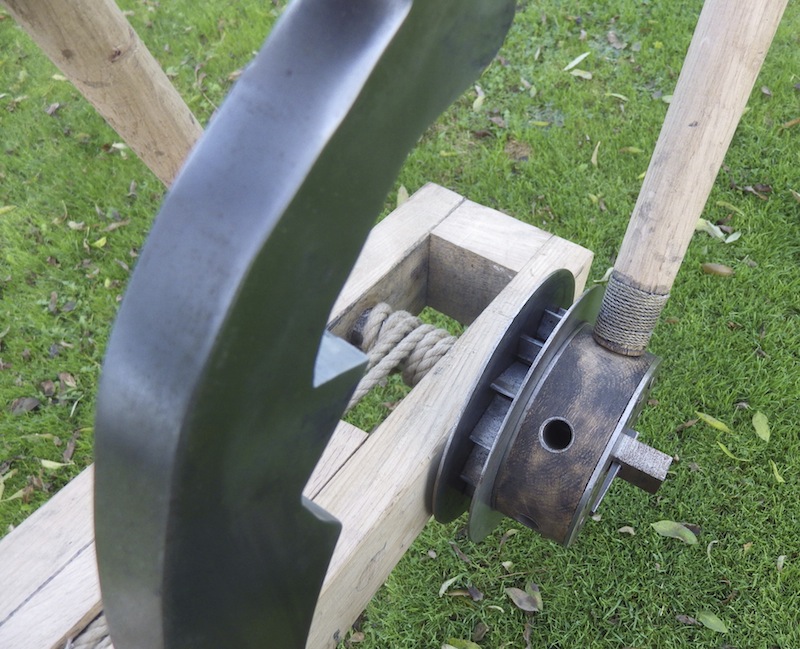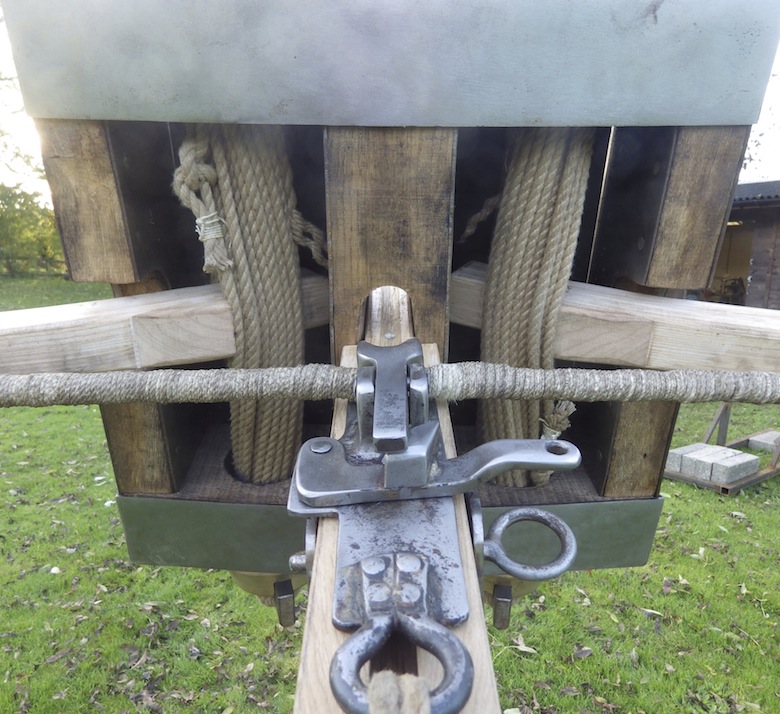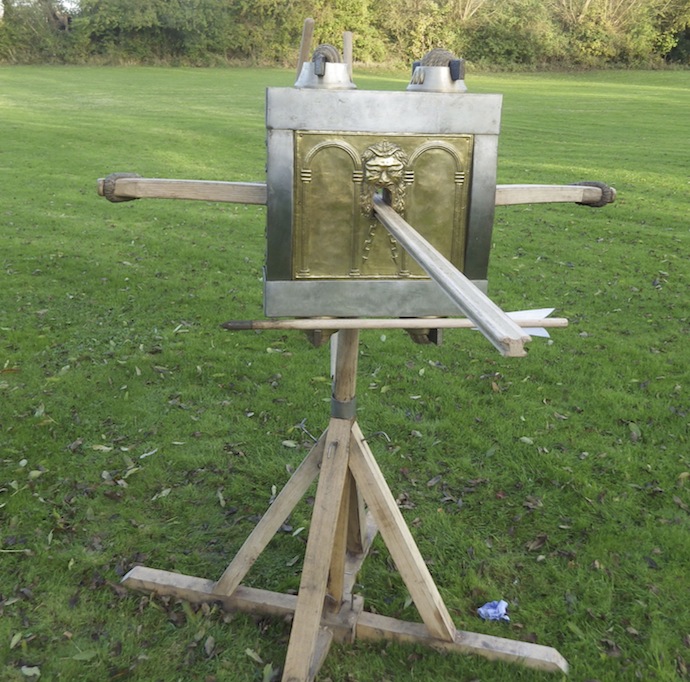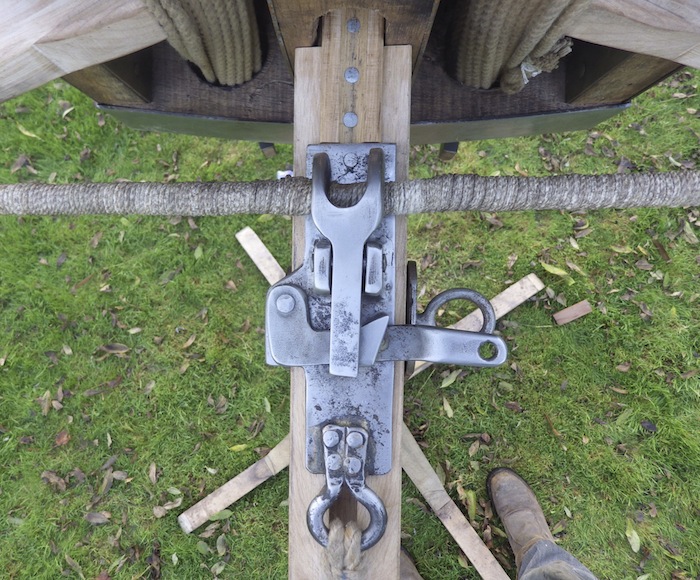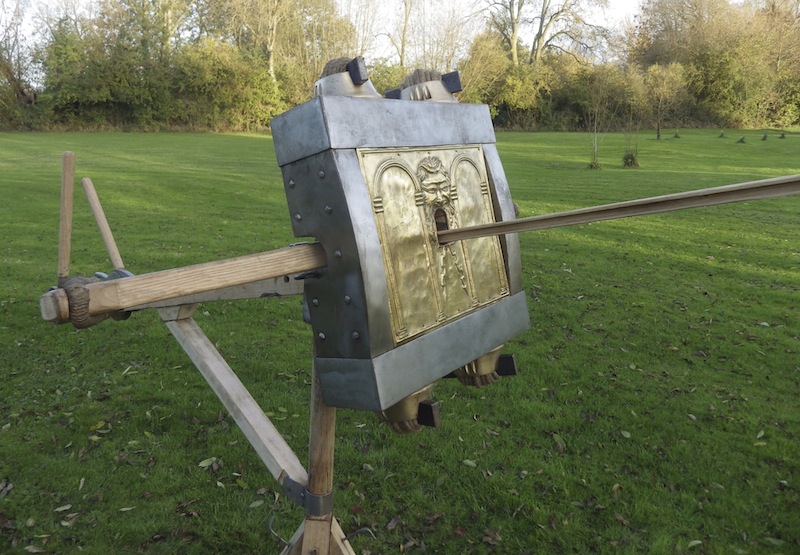Last year I was involved in running the build on a TV show where we built a 6 span catapulta in a serious hurry. This was my first exposure to these weapons and my understanding was helped by the input from Alan Wilkins and Tom Feely and I really got the bug.
The simplicity and purity of design just hooked me and so even though I make all day for a living, I decided to make one myself, just because, and so those odd moments of spare time have recently been dedicated to making a 3 span machine and I will document some of the work here.
Catapultas are the Roman arrow shooters and were developed from early Greek artillery and they went through continuous development from their origins through to the demise of the Empire. We have been incredibly fortunate in that two sets of documents have been assembled from parts to create a partially complete set of design sizes from Philon, a Greek scholar from the 5thC BC and Vitruvius a Roman architect from the first C BC. Between these two incomplete sets of documents we have been able to reconstruct nearly all the dimensions of these machines. There are some differences between the two sets of data, but most sizes are the same and so we can use these, with a little thought and guesswork, to make pretty accurate machines.
A great deal of the development of our understanding is thanks to EW Marsden and his fantastic treatises and then the continuing works of his friends Alan, Tom and Len Morgan.
The sophisticated simplicity of these machines is what hooked me. As we all know, engineering does not directly scale up or down and yet these machines seem to.
The motive power of these machines is generated by twisting two bundles of cord by drawing back the arms that pass through the centre of the bundles. By twisting the bundles you are in fact stretching them and so they want to pull back and to do this they must return the arms back to the rest position.
Start with the bolt size you want to shoot, divide this length by 9 and that gives you the 'hole' size. This is the size of the hole cut through the top and bottom plates of the head frame that the ropes pass through. Every dimension of the machine is a multiple of this hole size.
The Romans built machines from 1 through to 3 span, a span being 231mm and this refers to the length of the bolt, so a 3 span shoots a bolt 693mm long (28") and the therefore the hole size is 77mm.
What is lovely about this system is that an artillery officer need not even have experienced men working for him, he can just hand him a measuring stick 1 hole long, and ask for a timber 1 stick wide by 1 stick wide by 19 sticks long for example. (main stock, called the 'case' in Marsdens treatise). In fact Roman artillery officers were issued books with tables in them, so that when they arrive at a new site, a fort for example, they can pace a room and measure the ceiling height and after consulting their tables they can see what the maximum size of engine they can fit the space. Genius.
The Romans used sinew ropes for the torsion bundles and the real secret of these machines is that they were fitted to the machine and pre- tightened even before any twisting and were stretched so much, that the rope reduces to 66% of its starting diameter before the next pass of rope is fitted. By doing this, even before twisting the bundles, the arms come under enormous torque. We cannot use sinew rope and so I have used a modern synthetic that is not likely to be as efficient as sinew but still I hope for a good result.
The Romans listed the shooting distance of a 3 span machine as 440 yds, being the most efficient size. The one I made last year was a 6 span, a size the Romans never built and is likely to be pretty inefficient and it still got 319m (340yds).
So my plans are as follows.
The wooden parts are all green oak, except the arms, which are laminated ash and olive, which is required to get the curvature. The curve allowed for around 30% more power as it increases the power stroke and was a later Roman innovation. The head frame will be heavily reinforced with steel and again this was a later Roman innovation and allowed for a longer lived and safer machine. The washers (top and bottom metal components used to twist the bundles) have been cast in brass and need to be machined. I will also be fitting a brass front cover plate that protects the bundles from incoming missiles and also looks impressive. I will likely make the string in Kevlar as this is a component I do not want to risk breaking.
The earlier stages of the build mainly involved cutting wood and so is not so exciting, but now that things are starting to come together I will post up pictures as I go and try to be as coherent as I can through a very detailed subject.
I hope you enjoy.
Tod
